
Advertising & Brands
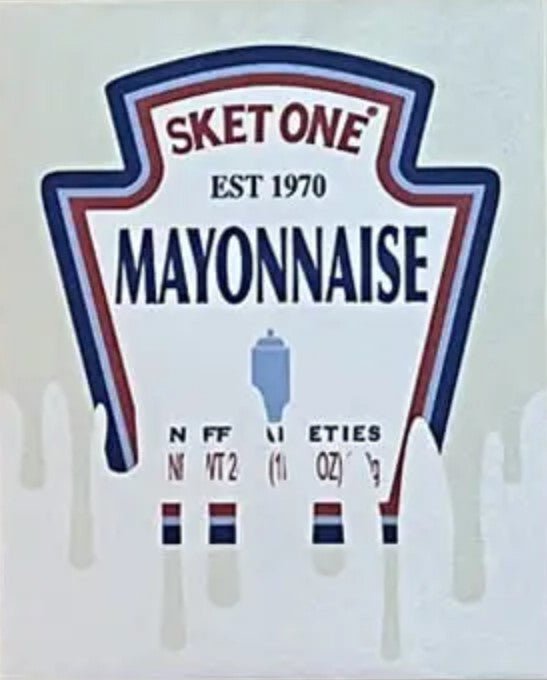
Sket-One Mayonnaise Condiment Canvas Giclee Print by Sket-One
Mayonnaise Condiment Canvas Pop Street Artwork Limited Edition Giclee Print on Canvas by Urban Graffiti Modern Artist Sket- One. 2022 High resolution digitally printed White semigloss artist canvas MDF stretcher frame
$99.00
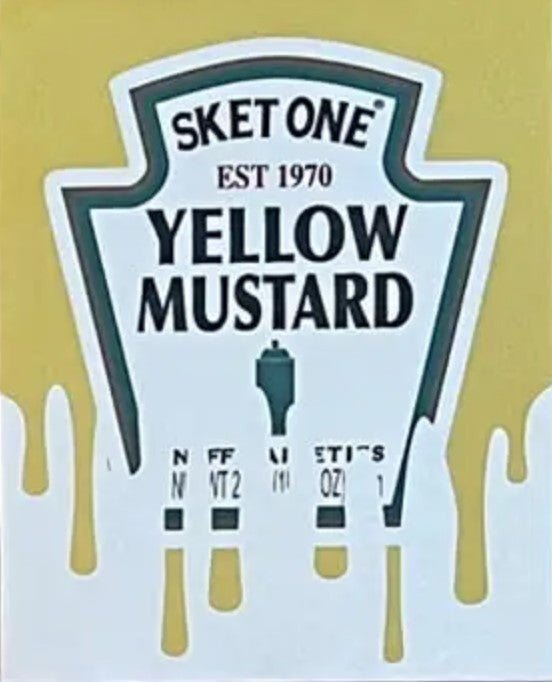
Yellow Mustard Condiment Canvas Giclee
Yellow Mustard Condiment Canvas Pop Street Artwork Limited Edition Giclee Print on Canvas by Urban Graffiti Modern Artist Sket- One. 2022 High resolution digitally printed White semigloss artist canvas MDF stretcher frame
$99.00
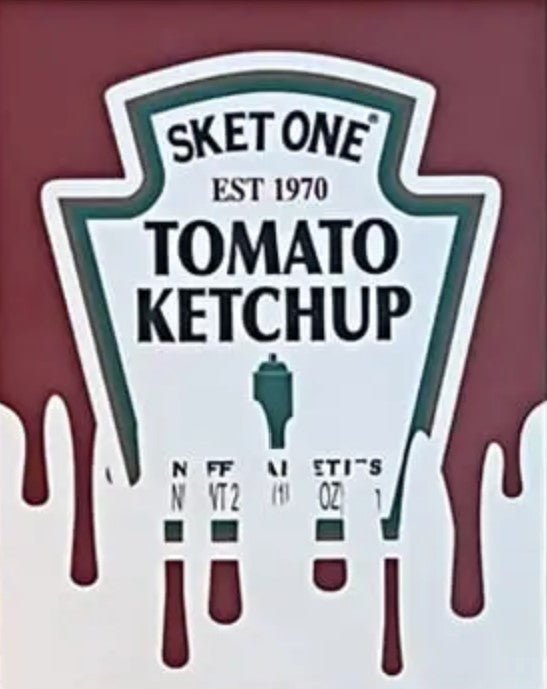
Sket-One Tomato Ketchup Condiment Canvas Giclee Canvas by Sket-One
Tomato Ketchup Condiment Canvas Pop Street Artwork Limited Edition Giclee Print on Canvas by Urban Graffiti Modern Artist Sket- One. 2022 High resolution digitally printed White semigloss artist canvas MDF stretcher frame
$99.00
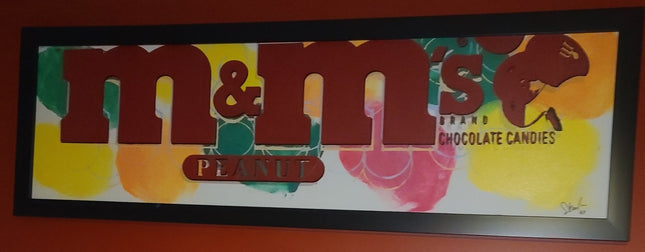
Steve Kaufman SAK M&Ms Dots HPM Serigraph Print by Steve Kaufman SAK
M&Ms Dots Limited Edition Hand-Embellished HPM 5-Color Serigraph Print on Canvas Framed by Steve Kaufman Graffiti Street Artist Modern Pop Art. 2008 Signed Custom Frame. "M&Ms" is a limited edition hand-pulled silkscreen mixed media on canvas by Andy Warhol protege Steve Kaufman (1960-2010). This piece is numbered and HC/50 and hand signed inverso. Measures approximately 16" x 47" (image). Known for his association with Andy Warhol, Steve Alan Kaufman (December 29, 1960 - February 12, 2010) were a great American pop artist, activist, and humanitarian. With the encouragement of his mother, Kaufman had his first show at the age of 8 at a Jewish Temple in the Bronx where he grew up. At just 14 he attained a scholarship to the Parsons School of Design while going on to attend Manhattan’s School of Visual Arts (SVA) where he met contemporary artists such as Keith Haring and Jean-Michel Basquiat.
$2,306.00
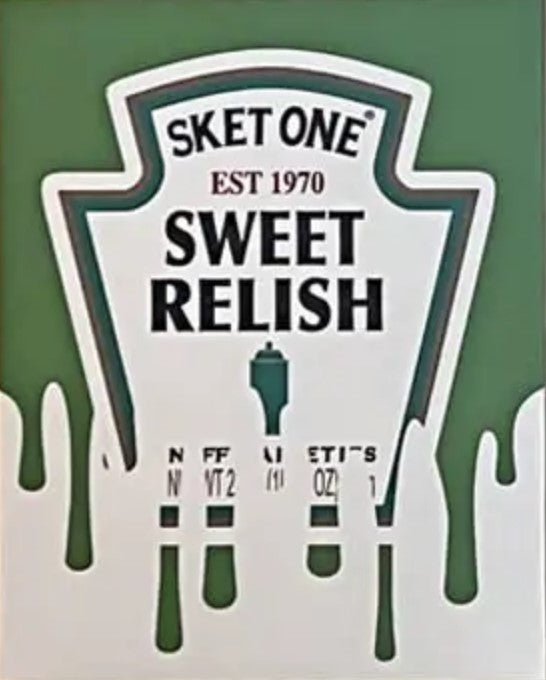
Sket-One Sweet Relish Condiment Canvas Giclee Print by Sket-One
Sweet Relish Condiment Canvas Pop Street Artwork Limited Edition Giclee Print on Canvas by Urban Graffiti Modern Artist Sket- One. 2022 High resolution digitally printed White semigloss artist canvas MDF stretcher frame
$99.00
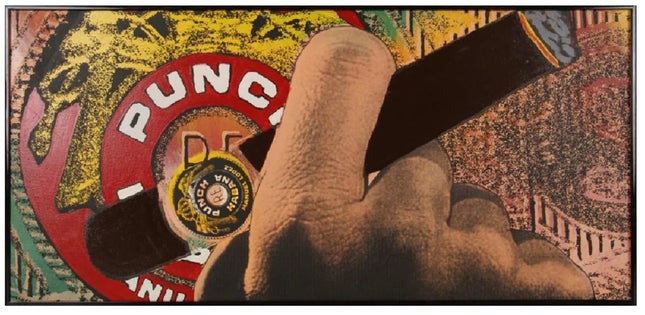
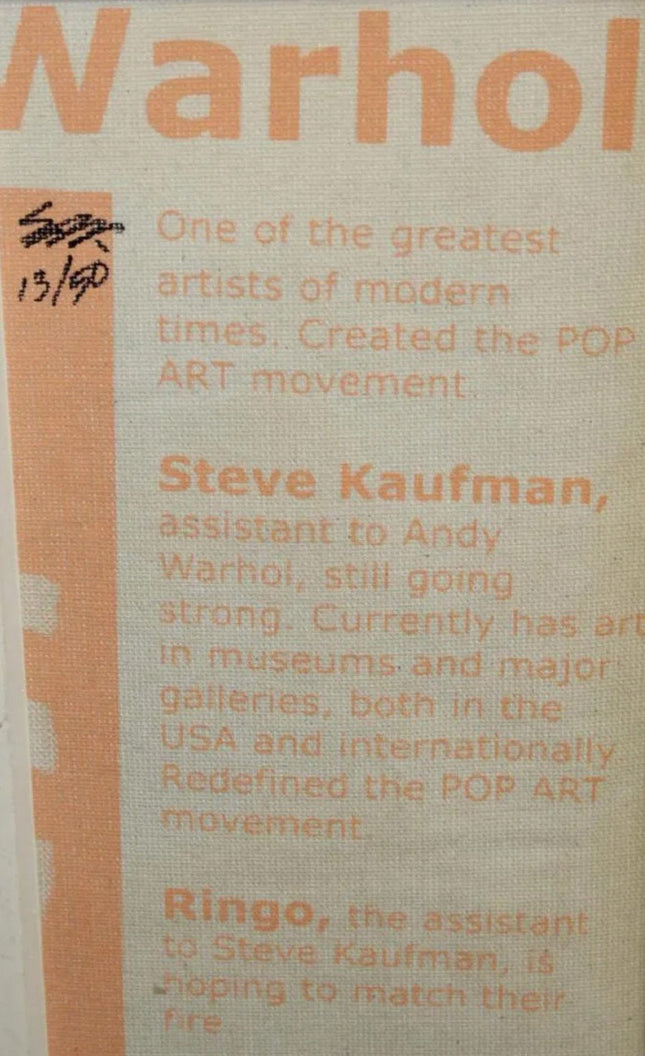
Steve Kaufman SAK Punch Cigar HPM Serigraph Print by Steve Kaufman SAK
Punch Cigar Limited Edition Hand-Embellished HPM Serigraph Print on Canvas Framed by Steve Kaufman Graffiti Street Artist Modern Pop Art. Custom Frame. Arguably the most sought-after cigar piece by Steve Kaufman. Steve Kaufman (American, 1960-2010) "Punch Cigar", hand embellished serigraph, Edition 37/150 and signed in monogram en verso. Ht: 16.5" Wd: 35" By the early 90’s, Kaufman’s work was highly in demand, but he wanted to remain in touch with a broad, public audience. He staged a one-man, one-night show painting 55 “Racial Harmony” murals in New York and appeared on TV and radio to promote racial tolerance. He also created an AIDS memorial in New York City and draped red fabric over the letter “D” of the Hollywood Sign in remembrance of everyone who had died of AIDS.
$3,135.00








